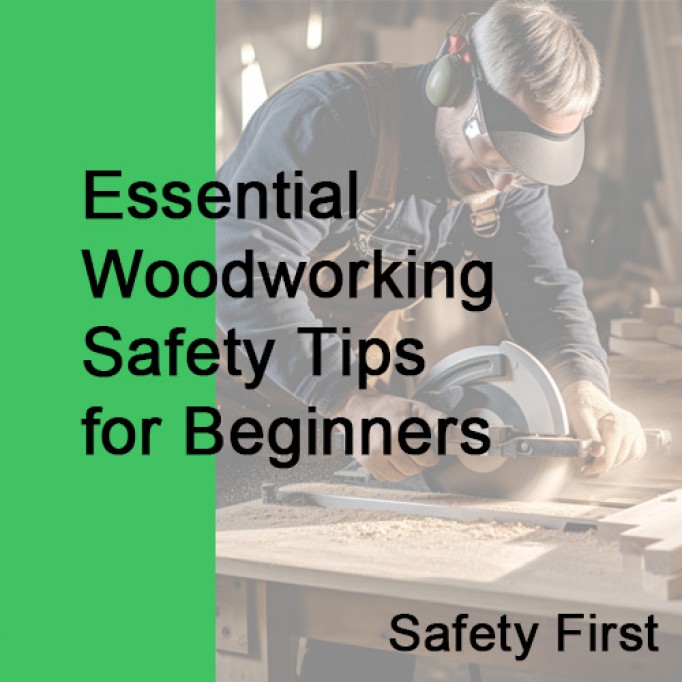Safety First: Essential Woodworking Safety Tips for Beginners

Understanding the Importance of Safety in Woodworking
Before delving into the specific safety tips, it’s crucial to understand why safety is paramount in woodworking. Woodworking involves the use of sharp tools, powerful machinery, and processes that can produce harmful dust and noise. A lack of proper safety measures can lead to serious injuries or long-term health issues.
Before delving into the specific safety tips, it’s crucial to understand why safety is paramount in woodworking. Woodworking involves the use of sharp tools, powerful machinery, and processes that can produce harmful dust and noise. A lack of proper safety measures can lead to serious injuries or long-term health issues.
1. Dress Appropriately
The first rule of woodworking safety is to dress for the job. This means:
- Avoiding Loose Clothing and Jewelry: These can easily get caught in machinery.
- Wearing Safety Gear: Essential gear includes safety glasses, hearing protection, and a dust mask or respirator.
- Sturdy Footwear: Closed-toe shoes, preferably with a steel toe, are a must.
2. Know Your Tools
Each tool in your workshop, from the simplest chisel to the most complex power saw, has its specific use and safety guidelines:
- Read the Manuals: Always read the manufacturer’s instructions before using a new tool.
- Get Hands-On Training: If possible, learn tool usage from an experienced woodworker.
- Respect the Tools: Understand that every tool can be dangerous if misused.
3. Keep a Clean and Organized Workspace
A cluttered workspace can lead to accidents. Here’s how to keep it safe:
- Regular Cleaning: Sawdust and wood scraps not only are a fire hazard but can also cause slips and falls.
- Tool Organization: Keep tools in their designated places to avoid accidental injuries.
4. Understand Woodshop Ergonomics
Ergonomics plays a vital role in preventing strain and overuse injuries:
- Adjustable Workstations: Ensure your workbench is at a comfortable height.
- Proper Lifting Techniques: Learn to lift heavy materials safely to avoid back injuries.
5. Stay Focused and Avoid Distractions
Many woodworking accidents happen due to a lack of attention:
- Work When Alert: Avoid working when tired or under the influence of drugs or alcohol.
- Minimize Distractions: Keep your focus on the task at hand.
6. Use Sharp Tools
It might seem counterintuitive, but sharp tools are safer than dull ones because they require less force and provide more control.
- Regular Sharpening: Learn how to sharpen your tools or have them professionally sharpened regularly.
7. Practice Proper Tool Usage
Incorrect tool usage is a common cause of accidents:
- Use Push Sticks and Hold-Downs: Especially with saws, to keep your fingers away from blades.
- Never Force a Tool: If you’re struggling to cut, it’s time to stop and reassess.
8. Be Aware of Kickback
Kickback, where a piece of wood is thrown back by a power tool, is a dangerous occurrence:
- Learn About Kickback Prevention: Understand how to prevent kickback for each power tool you use.
9. Master Fire Safety
Given the amount of wood and sawdust in a typical workshop, fire safety is crucial:
- Have a Fire Extinguisher: Make sure it’s suitable for wood fires and easily accessible.
- Dispose of Sawdust Regularly: Accumulated sawdust can be a significant fire hazard.
10. Develop a First Aid Knowledge
Lastly, knowing basic first aid is essential:
- First Aid Kit: Keep a well-stocked first aid kit in your workshop.
- Learn Basic First Aid: Knowledge of how to treat cuts, burns, and other common injuries can be invaluable.
Conclusion
Safety in woodworking is not just about following rules but developing a safety-first mindset. By dressing appropriately, understanding and respecting your tools, maintaining a clean and organized workspace, and staying focused, you can enjoy the craft of woodworking while minimizing the risks. Remember, in woodworking, the best project you can complete is a safe day in the shop.
Safety in woodworking is not just about following rules but developing a safety-first mindset. By dressing appropriately, understanding and respecting your tools, maintaining a clean and organized workspace, and staying focused, you can enjoy the craft of woodworking while minimizing the risks. Remember, in woodworking, the best project you can complete is a safe day in the shop.